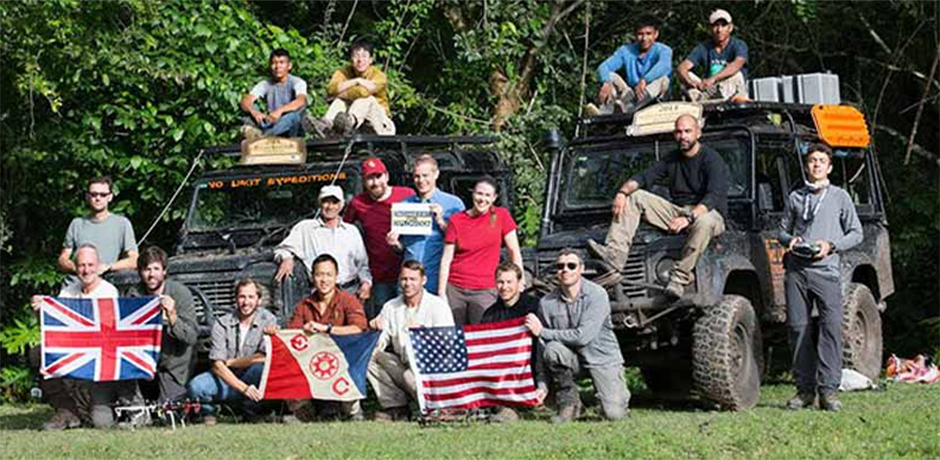News Release

UC San Diego researchers with colleagues from USC and University of Texas did field work at El Zotz in Guatemalan jungle
Septmeber 16, 2014
Capturing Ancient Maya Sites from Both a Rat’s and a Bat’s Eye View
Following a recent field expedition to the Mesoamerican archaeological site known as El Zotz, researchers from UC San Diego's Qualcomm Institute (QI) returned home from Guatemala with more than 300 gigabytes of 3D data derived from a bevy of high-tech virtual devices. The collaboration began when the UC San Diego team—including QI research scientist and National Geographic Emerging Explorer Albert Lin—was invited to help document the pre-Columbian site, which is 14 miles west of the major center of Tikal. Satellite imagery of the area exists, but it is obstructed by the tree canopy, and the team determined from tests during this and a previous expedition that launching an unmanned aerial balloon up and through the trees to document the area was virtually impossible. The QI team eventually concluded that an unmanned quadcopter or plane is the best bet for capturing aerial imagery, particularly if the researchers can equip a drone with a LiDAR (light detection and ranging) laser to capture and recreate a 3D digital reconstruction of El Zotz and the surrounding area. Lin co-directs the Engineers for Exploration (E4E) program engaging students in technology development for exploration. His co-director, UC San Diego computer science professor Ryan Kastner and QI Principal Design Engineer Curt Schurgers were also members of the El Zotz expeditions, along with a team of students. "A lot of the technologies we planned to use were thwarted by the jungle," noted grad student Perry Naughton who visited El Zotz in February. "Even the copters can only take off in very few places.”
